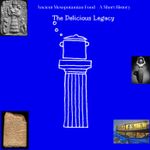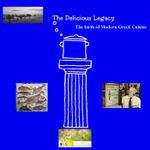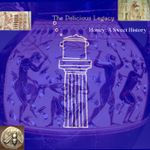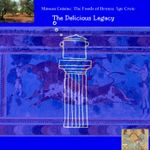Traditional Food of Christmas around Europe
How did our ancestors celebrated the birth of Christ? What was considered "special" and celebratory dish and food worthy of the birth of Christ?
Are there many differences between the nations of Europe, north, south, east and west?
What the Greeks of different regions cook for their Christmas table? what other foods and cakes we serve during the twelve day festive table?
And most importantly, why am I so excited and greedy when Christmas comes?
Find out all the above and more here!
Why there are so many cakes and sweet puddings over the festive period? Traditional cakes made and eaten almost everywhere in Western Europe between Christmas and early January.
The Twelfth Night cake, which is in direct line of descent from the Roman cakes of Janus, after whom January is named. Janus, god of the double gate – the gate that opens and
the gate that shuts – had two faces and a double mission: to look back at the past, the Old Year, and forward to the future, the New Year.
In Gascony, aniseed cakes used to be distributed after midnight Mass at Christmas.
Celebratory foods include Goose, the Germanic tradition was to serve roast goose at Christmas. This is convenient,
since the goose, a large bird, hatches in spring and is in its prime at eight or nine months old. Any older and it will not be a success roasted.
Or Carp; who is king of the fish in Central Europe, where Christmas or Easter would be unthinkable without it.
In South France dried figs also feature among the traditional ‘Thirteen Desserts’ of Christmas. With walnuts or hazelnuts, raisins and almonds, they were one of what were called the quatre mendiants, the four orders of begging friars (so called because the different colours of the nuts and dried fruits suggested the colours of their habits). A treat for children was a ‘Capuchin nougat’ – a dried fig split open and stuffed with a green walnut.
Calissons, the famous sweets of Aix-en-Provence, must be made with almonds. They consist of marzipan and crystallized fruits mixed with orange-flower water, all the ingredients being Provençal, and worthy of a sweetmeat which is the pride of Aix. Olivier de Serres, in his Théâtre d’agriculture et mesnage des champs, describes a confection very much like calissons d’Aix. Mme de Sévigné was delighted with a big box of them that her daughter gave her. The word calisson may be from Latin. At Christmas festivities in Aix-en-Provence rich families and confectioners had them distributed by priests at Mass instead of the consecrated bread.
Enjoy the latest episode with the welcome support of Maltby and Greek UK No1 Greek Delicatessen!
https://www.maltbyandgreek.com/
Much love
Thom & The Delicious Legacy
Support this show http://supporter.acast.com/the-delicious-legacy.
If you love to time-travel through food and history why not join us at https://plus.acast.com/s/the-delicious-legacy.
Hosted on Acast. See acast.com/privacy for more information.









